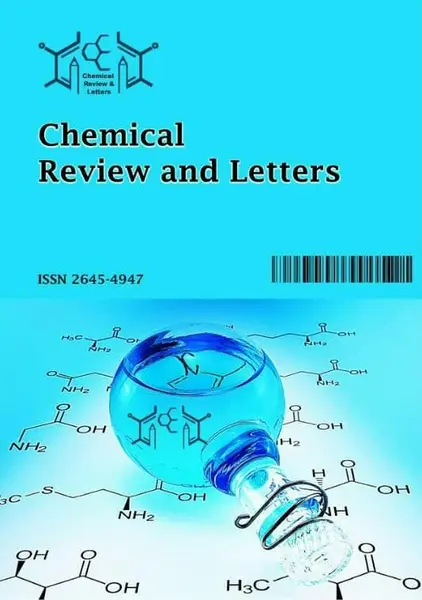-
co-production of conjugated linoleic acids, exopolysaccharides and bacteriocins by lactobacillus acidophilus la5 and bifidobacterium animalis subsp. lactis bb12 in supplemented dairy effluents
جزئیات بیشتر مقاله- تاریخ ارائه: 1401/11/12
- تاریخ انتشار در تی پی بین: 1401/11/12
- تعداد بازدید: 208
- تعداد پرسش و پاسخ ها: 0
- شماره تماس ژورنال: 989360221112
co-production of conjugated linoleic acids, exopolysaccharides and bacteriocins by lactobacillus acidophilus la5 and bifidobacterium animalis subsp. lactis bb12 in supplemented dairy effluents
in this study, the effects of initial ph (5 − 7), temperature (30 − 38 ◦c) and incubation time (12 − 48 h), as well as yeast extract and free linoleic acid concentrations, respectively (0 – 4 %) and (0 − 400 μl), on the co-production of conjugated linoleic acid (cla), exopolysaccharides (epss) and bacteriocins (bacs) by lactobacillus acidophilus la5 and bifidobacterium animalis subsp.
lactis bb12 and their biomass in cheese whey and milk permeate were evaluated. the results showed that biomass, cla, epss and bacs activity ranged log 0.80 - log 8.67 g.l-1, 3.08-107.95 μg.ml-1, 107.75-351.92 mg.l-1 and 9.29-14.62 mm, respectively. yeast extract concentration was the only factor with the positive significant effect on biomass and postbiotic metabolites i.e.
its increasing caused to an increase in both of them (p<0.05). the temperature significantly affected the production of biomass and cla; its increasing resulted in increasing both (p<0.05). the initial ph had significant, but different, effects on epss and bacs production (p<0.05) i.e. epss and bacs production decreased and increased, respectively, as a result of increased initial ph.
increasing free linoleic acid concentration from 0 up to 400 μl led to increased cla biosynthesis. higher biomass, epss and bacs are produced in cheese whey, compared with milk permeate, but cla produced in milk permeate was higher than that obtained in cheese whey. b. animalis bb12 produced more biomass, cla and epss in comparison to l. acidophilus la5. however, these probiotics had no statistical difference in terms of producing bacs. this work successfully demonstrated the co-production potential of cla, epss and bacs by two commercial probiotics in dairy effluents.
حوزه های تحت پوشش ژورنال
مقالات جدیدترین رویدادها
-
استفاده از تحلیل اهمیت-عملکرد در ارائه الگوی مدیریت خلاقیت سازمانی و ارائه راهکار جهت بهبود
-
بررسی تاثیر ارزش وجوه نقد مازاد بر ساختار سرمایه شرکت های پذیرفته شده در بورس اوراق بهادار تهران
-
بررسی تأثیر سطح افشای ریسک بر قرارداد بدهی شرکت های پذیرفته شده در بورس اوراق بهادار تهران
-
بررسی تأثیر رتبه بندی اعتباری مبتنی بر مدل امتیاز بازار نوظهور بر نقد شوندگی سهام با تأکید بر خصوصی سازی شرکت ها
-
تأثیر آمیخته بازاریابی پوشاک ایرانی بر تصویر ذهنی مشتری پوشاک ایرانی (هاکوپیان)
-
بررسی نقش مواد مخدر در اقتصاد دولتی و تشدید پولشویی
-
بررسی و ارزیابی تخریب بتن بر اثر بارانهای اسیدی
-
نقش انگیزش در پیشرفت تحصیلی دانش آموزان
-
effect of interfacial scattering on spin-dependent thermoelectric properties in diluted magnetic semiconductor layered structures
-
locality in exceptions and derived environments in vowel harmony
مقالات جدیدترین ژورنال ها
-
مدیریت و بررسی افسردگی دانش آموزان دختر مقطع متوسطه دوم در دروان کرونا در شهرستان دزفول
-
مدیریت و بررسی خرد سیاسی در اندیشه ی فردوسی در ادب ایران
-
واکاوی و مدیریت توصیفی قلمدان(جاکلیدی)ضریح در موزه آستان قدس رضوی
-
بررسی تاثیر خلاقیت، دانش و انگیزه کارکنان بر پیشنهادات نوآورانه کارکنان ( مورد مطالعه: هتل های 3 و 4 ستاره استان کرمان)
-
بررسی تاثیر کیفیت سیستم های اطلاعاتی بر تصمیم گیری موفق در شرکتهای تولیدی استان اصفهان (مورد مطالعه: مدیران شرکتهای تولیدی استان اصفهان)
-
طراحی مدل بهره وری دورکاری کارکنان دولت در شرایط کرونایی (مروری بر ادبیات)
-
تاثیر نسبت های نقدینگی بر جریان های نقدی در شرکت های پذیرفته شده در بورس اوراق بهادار تهران
-
ارائه روشی برای بهبود الگوریتم aodv برای مسیریابی شبکه های ادهاک بین خودرویی ( vanets ) با استفاده از الگوریتم جهش قورباغه اصلاح شده
-
بررسی چشم اندازها و چالش های سیستم های تجارت الکترونیک
-
هوش فرهنگی و فرهنگ سازمانی در سازمان های امروز


سوال خود را در مورد این مقاله مطرح نمایید :